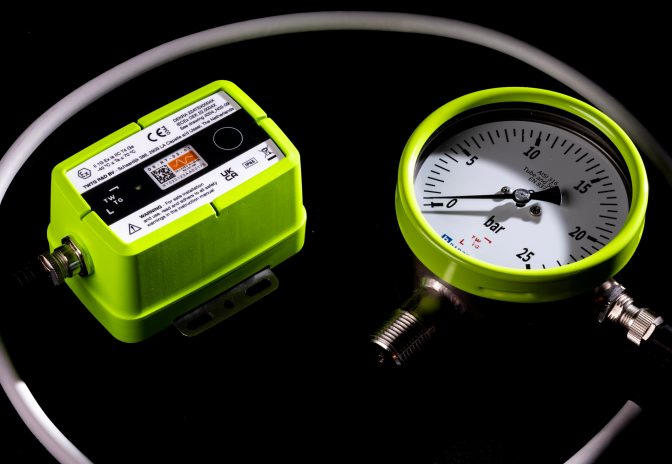Analyzing the Impact of I-IoT Sensors on Industrial Efficiency
Introduction
Innovation is the driving force behind progress and with the advent of the Industrial Internet of Things (I-IoT), industrial operations are on the brink of a transformative era. TWTG, a leading company in this sector, is poised to guide the energy and chemical industries on this journey with its range of NEON sensors.
However, while technology has the potential to revolutionize optimization, safety, profitability, and sustainability, much of this vision remains largely conceptual for now. Currently, the energy industry is progressing cautiously, integrating automation at a measured pace—gradually transforming and digitizing separate processes and learning from the advantages and insights gained.
Eventually, these separate processes will meld into one, leading to the complete digitalization of most energy facilities. But with an increasing amount of data coming from an ever-increasing number of measuring points and devices, how do we calculate their incremental gains? Energy companies need such insight to build business cases to enable investment in such technologies.
How to calculate incremental gains
A good starting point is to better understand the digitization process by analyzing the real-world history of the processes being digitized. This back catalog includes failure rates, inspection frequencies, and equipment’s average lifespans.
So, by utilizing historical data, we can estimate the cost savings and efficiency improvements gained from implementing digital alternatives, such as real-time alerts or predictive maintenance. Additionally, we can calculate the benefits of resource savings, such as time saved by eliminating manual inspection routines, freeing engineers up to focus on more beneficial tasks.
This statistical evidence supports our appreciation of how I-IoT unlocks its potential. For example, according to the Journal of Sensor and Actuator Networks, I-IoT can improve system efficiency by up to 40% and reduce overall operational downtime by 25% [1].
Drilling down further, however, things become more complex. Vibration sensors, for example, have been shown to reduce machinery failures by up to 30% and extend equipment lifespans by up to 40% [2].

“I-IoT can improve system efficiency by up to 40% and reduce overall operational downtime by 25%. [1] ”
Similarly, temperature transmitters can increase process efficiency by 35% and significantly reduce safety-related incidents [3]. While these percentages are impressive, quantifying them becomes far more challenging, especially when figures and factors accumulate, and data begins to blend.
Use case in a balance sheet
With a sharpened pencil, we can begin to value these gains. For instance, industry expert James Risko estimates 20-30% of steam traps to fail annually [4]. Traditionally, identifying these failures required regular manual inspections—a monumental but essential task, especially in extensive facilities that could have thousands of steam traps.
TWTG offers an excellent solution for this issue with NEON Temperature Transmitters equipped with dual temperature probes. Installed upstream and downstream of a steam trap, these probes measure temperature differences to detect blockages and leaks. If a trap is blocked, the downstream temperature decreases, triggering an alert. Conversely, if a trap leaks, steam can escape continuously, raising the downstream temperature and triggering an alternative alert.

To put this logic into a balance sheet – Estimating the cost of trap failure is standard financial practice, with a conservative allocation of $5,000 per trap based on a 15% failure rate. Therefore, even a minimal facility with only 100 steam traps would face an annual loss of $75,000 due to steam loss and maintenance. $750 per year per steam trap. This cost nearly matches the expense of the TWTG solution, which, considering that NEON devices have a lifespan of eight-to-ten years, offers a return on investment in a single year.
This use case is a simple example but demonstrates how effective steam trap monitoring can lead to significant energy savings. Conservatively, it could save up to 20% of a facility’s annual energy bill through these types of losses. So, having discovered that assigning a value to a single use case is feasible, the process, however, becomes increasingly complex as we aggregate data from numerous sources. Each energy facility is unique, with multiple complexities and interdependent systems, making it challenging to determine incremental gains. This is where digital twins come into play, taking over from our calculators.
Digital Twins come into play
The idea of digital twins, which are virtual copies of real-world operations, is critical for the future of engineering. Engineers can use these models, ranging from simple, small-scale replicas to incredibly complex, expansive data galaxies – each designed

to focus on specific aspects of operations and gain previously undiscovered insights. They function like telescopes, zooming in and out of operations using data instead of pixels, concentrating on particular elements, or viewing the entire system. These models aid engineers by providing a deeper understanding of the relationships and connections within systems, enhancing a decision-making process based on a much deeper understanding.
As data becomes increasingly crucial in strategic planning, it is essential to aggregate and analyze it to develop strategies that minimize environmental impact, optimize energy use, and enhance overall facility management. In fact, the World Economic Forum, in collaboration with Accenture, conducted a study in response to the Paris Agreement that stated while obviously other changes in production methodology will also be necessary to achieve the required goals, the use of well-applied digital technologies alone could reduce emissions and increase efficiency by up to 20% overall by 2050. [5]
The use of sensor-generated data and digital twins is driving advancements toward a sustainable and efficient future. Statistics clearly demonstrate that data is vital to transforming industries and introducing a new era of industrial productivity.
These tools have the potential to fundamentally change the way industries think, opening up countless possibilities for the future. As industries continue to evolve, the strategic use of data and digital models will be instrumental in shaping all our futures.


Citations & Sources
[1] Journal of Sensor and Actuator Networks – Industrial Internet Consortium
[2] International Society of Automation – IEEE Xplore.
[3] Industrial Internet Consortium – International Society of Automation.
[4] Risko, J., Understanding Steam Traps – Chemical Engineering Progress, February 2011
[5] Digital for Climate Scenarios – Accenture/ World Economic Forum
